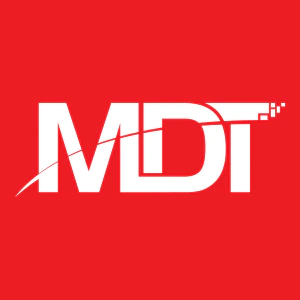Why Budgeting Still Breaks Down
Despite evolving priorities and the increasing cost of digital operations, many credit unions continue to struggle with budgeting processes and projections that lack a clear strategy.
Chances are, you’ve seen this too: A board sets ambitious goals—new digital rollouts, stronger member engagement, faster loan approvals—yet the budget supporting those goals was locked in months earlier. Or, departments continue to work in silos, unknowingly planning around outdated assumptions. The result? Resources get misaligned, internal teams are stretched, and strategic momentum stalls.
Even with positive intentions, budgeting often becomes an exercise in forecasting expenses, rather than a process for aligning your budget to your strategy. In today’s environment—with rising vendor costs, shifting compliance requirements, and demand for cross-functional integration—this gap is no longer sustainable.
Behind the Numbers: What Budgets Miss
MDT’s latest white paper explores why even growing credit unions fall into this trap. Our research found:
- Technology costs are consistently underestimated—not because of vendor surprises, but due to blind spots around staffing, compliance, internal lift, and cross-departmental demand.
- Licensing escalators are often missed—those built-in contractual increases quietly erode margins when not actively tracked across renewal cycles.
- Compliance, training, and bandwidth are frequently overlooked—especially when digital initiatives span multiple teams and require cross-functional coordination.
These unexpected costs rarely show up in a line-item review—but they can derail budgets and stall momentum mid-year.
Bottom line? Strategy costs more than software.
From Forecast to Foresight: A Better Approach
What separates the most effective credit unions? It’s not budget size—it’s budget intent.
Progressive institutions begin with a strategic plan, then build their budget around it. They don’t simply ask, “What will this cost?” but rather, “What do we need to achieve our goals, and what resources will get us there?”
MDT’s latest white paper, “Overcoming Budgeting Pain Points for Credit Unions,” discusses the strategy behind effective budgeting. By taking a measured, thoughtful approach, credit unions can shift from reactive budgeting to a model that is:
- Aligned: Tied directly to long-term priorities, not last year’s baseline
- Collaborative: Involving operations, IT, finance, and member services from day one
- Agile: Built to flex mid-year based on actuals and emerging opportunities
- Transparent: Communicated clearly across leadership and staff so everyone understands the “why” behind the numbers
How Credit Unions Can Take the First Step
Whether you’re preparing for 2026 or adjusting this year’s numbers, here’s where you can begin:
Encourage dialogue: Don’t let budgeting happen in a vacuum. Invite input from department leaders, especially those on the front lines.
Reconnect the dots: Ensure strategic planning concludes before the budget is finalized—not the other way around.
Identify (cost) blind spots: Look beyond vendor quotes and surface internal lift, compliance obligations, and integration requirements.
Revisit quarterly: Budgets should evolve. Compare projections with actual results and adjust accordingly based on new initiatives, pricing changes, or capacity issues.
It’s Time to Rethink Budgeting as Strategy
At its best, a budget is more than a spreadsheet—it’s a roadmap to mission execution. But that only happens when credit unions treat budgeting not as a finance function, but as a strategic discipline.
We’re here to help credit unions close the gap between planning and execution. We work alongside your team to turn strategy into action—identifying the right technologies, refining processes, and aligning resources to help you reach your goals with clarity and confidence.
Want the Full Picture?
For a deeper dive into the most common budgeting pitfalls—and how to turn them into strategic opportunities—download MDT’s latest white paper here.
You’ll get real-world examples, expert insights, and actionable guidance from MDT’s team of experts.

